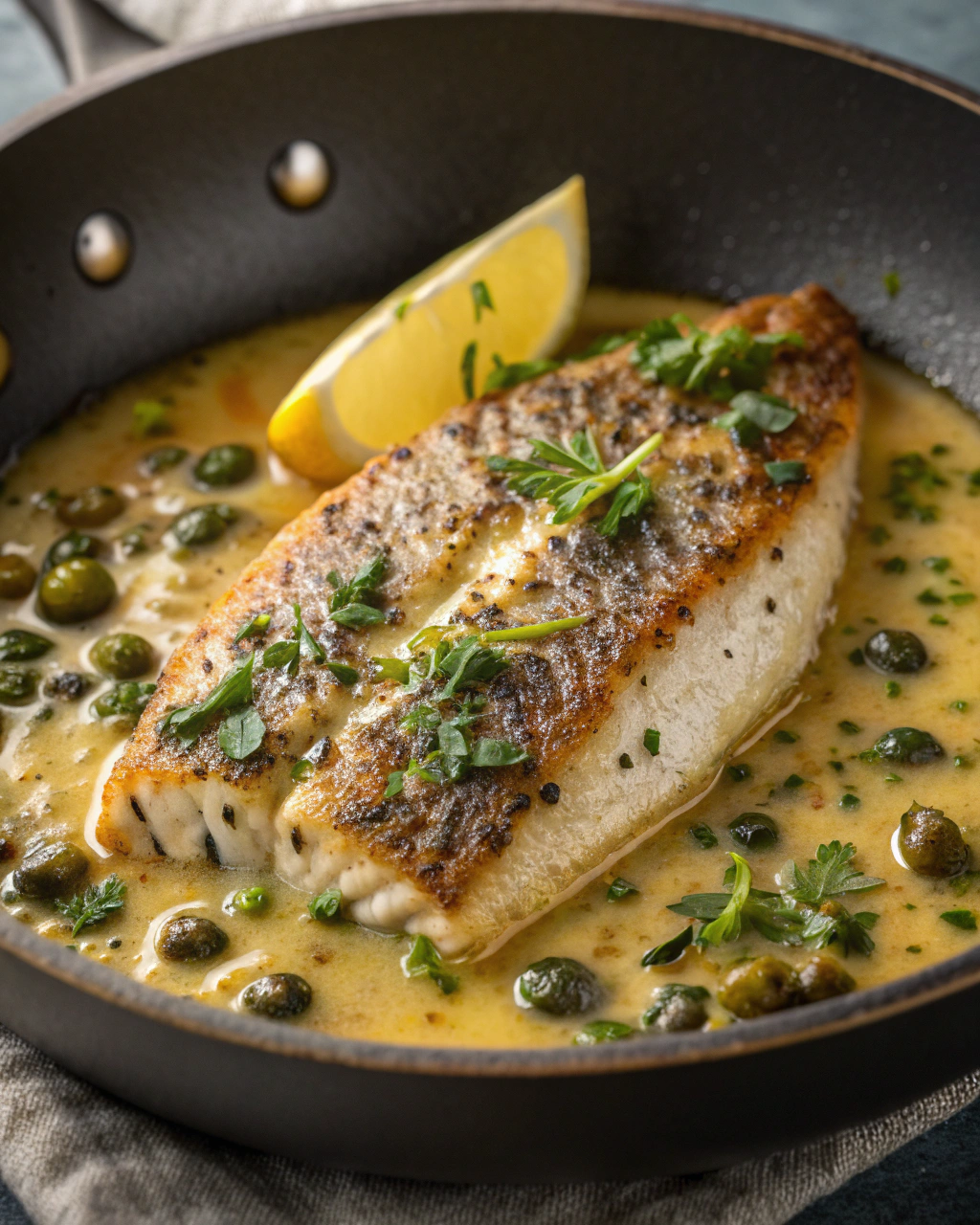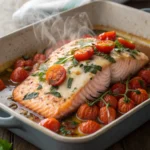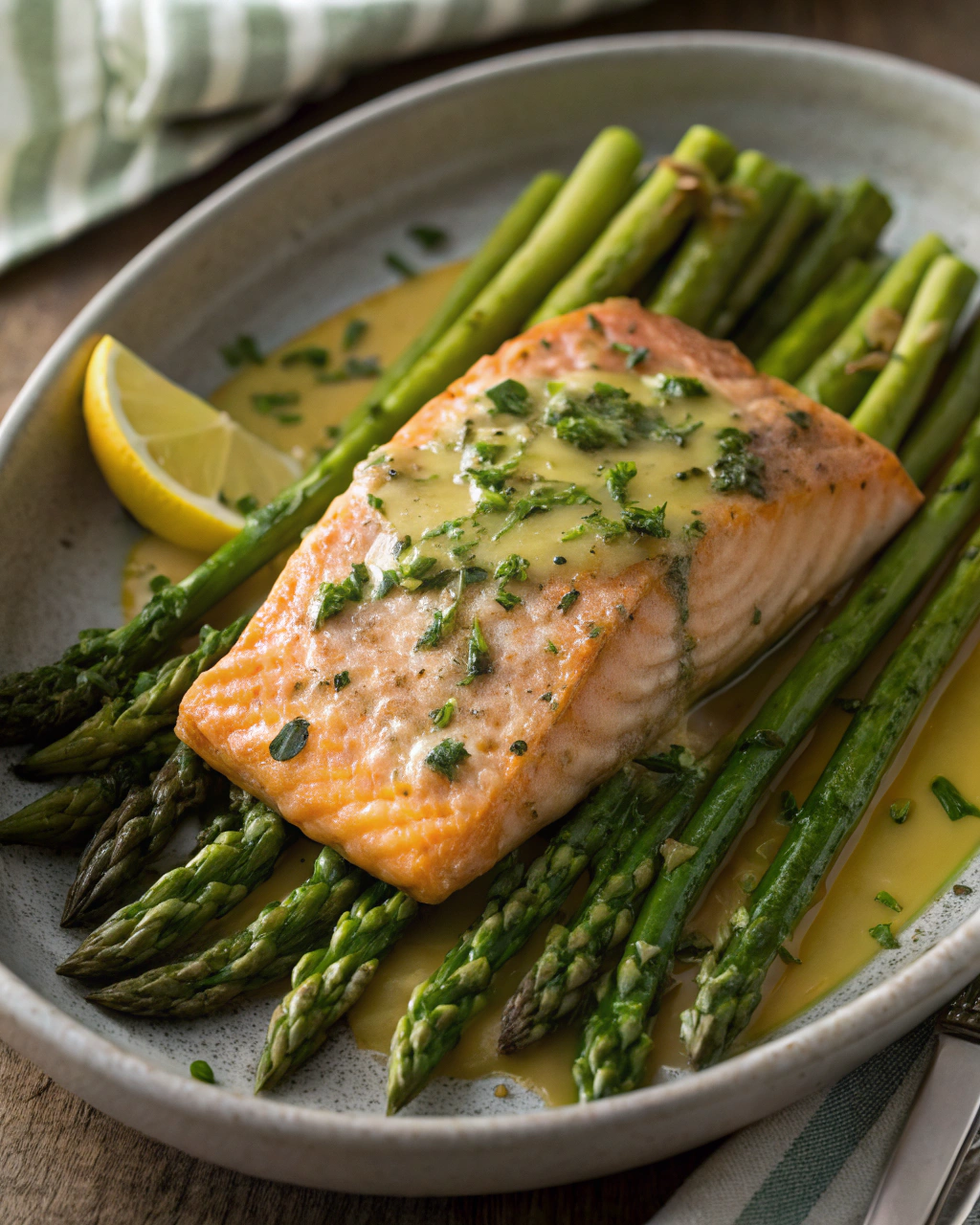Chef’s secret: the thing that makes restaurant-style sea bass taste like a dream isn’t exotic — it’s technique. I’ll let you in on it: a ridiculously hot pan, a dry skin, and a quick buttery lemon-caper finish. I learned this trick while watching a quiet kitchen pro flip a fillet so confidently that the sauce practically applauded — and ever since, I’ve been repeating the ritual at home whenever I want something that looks fancy but takes under 30 minutes.
Quick Facts
- Yield: Serves 4
- Prep Time: 10 minutes
- Cook Time: 10 minutes
- Total Time: 20 minutes
Why This Recipe is Awesome
This recipe gives you crispy, golden edges and a flaky, tender center with minimal fuss. The pan-sear gives a satisfying sizzle and caramelized color, while the bright lemon-caper sauce cuts through the richness and smells like a seaside café. It’s quick enough for a weeknight but pretty enough for guests — it’s so easy even your oven can’t mess it up.
Ingredients
For the Main Dish:
- 4 sea bass fillets (6–8 oz each), skin on if possible
- Salt and freshly ground black pepper, to taste
- 2 tbsp olive oil (divided)
- 2 tbsp unsalted butter
- 1 lemon, zested and juiced (about 2 tbsp juice)
- 2 cloves garlic, minced
- 2 tbsp capers, drained and rinsed
- 2 tbsp finely chopped parsley (optional, for freshness)
For the Sauce / Garnish (if applicable):
- 1/4 cup dry white wine or low-sodium chicken broth (optional)
- 1 tsp honey or a small pinch of sugar to balance acidity
- Extra lemon wedges for serving
How I Make It
Step 1:
I pat the fillets dry with paper towels until the skin looks almost satin — moisture fights crispness. Then I season both sides generously with salt and pepper. I let them sit at room temperature for about 5 minutes while I heat a heavy skillet over medium-high heat. When the pan shimmers, I add 1 tbsp olive oil; the oil should ripple and send up a faint aroma.
Step 2:
I lay each fillet into the pan skin-side down with a confident press so the skin makes full contact and won’t curl. Listen for that satisfying, assertive sizzle — that tells you the Maillard magic has begun. I sear the skin for about 4–5 minutes until the edges turn golden-brown and crisp. Don’t fuss with them; let the heat do the work.
Step 3:
I flip the fillets carefully and add 1 tbsp olive oil and 2 tbsp butter to the pan, spooning the foamy butter over the tops for about 2–3 minutes. The combo of oil and butter gives flavor and raises the smoke point so the butter doesn’t burn. If the pan looks dry, I splash in the optional 1/4 cup wine or broth and scrape any browned bits — they taste like concentrated sunshine.
Step 4:
When the fillets feel slightly firm and the flesh flakes easily with a fork (for thicker pieces, aim for an internal temp of 145°F if you use a thermometer), I pull them off the heat. The center should remain moist and translucent-tinged, not chalky. While the fish rests for a minute, I keep the pan on medium to make the sauce.
Step 5:
I reduce the pan juices until they thicken a touch, then add 2 tbsp butter, minced garlic, the zest and juice of 1 lemon, rinsed capers, and 1 tsp honey. I swirl until the sauce glistens and the garlic loses its raw edge — about 30–45 seconds. I spoon that bright, buttery sauce over the fillets and finish with chopped parsley and extra lemon wedges. Serve immediately while the skin remains crisp and the kitchen smells like citrus and butter.
Pro Tips
- Dry the fillets well. I say it again because crisp skin depends on it — a damp fillet will steam instead of sear.
- Use a heavy skillet (cast iron or stainless). It holds heat and gives you the color you want.
- Temperature check: aim for 145°F internal for fish, but trust the flake test — it should separate gently along the grain.
- Want extra richness? Finish the sauce with an extra 1 tbsp butter off the heat for a silky finish.
Common Mistakes to Avoid
- Skipping preheating: Classic rookie move. It changes texture and bake time.
- Overmixing: Leads to dense or chewy results. Mix until just combined.
- Guessing cook time: Always use visual cues or a timer, not just vibes.
- Overcrowding pans: Give your food some breathing room to crisp properly.
Alternatives & Substitutions
- If you don’t have sea bass, use **cod, halibut, or snapper** — thicker white fish handle the sear well. Flavor stays similar; texture varies slightly (halibut is denser).
- Don’t use butter? Swap for extra olive oil and add a splash of cream at the end for richness (dairy-free option: use plant-based butter or extra oil).
- No white wine? Use chicken broth or a splash of water with a pinch of salt and extra lemon for brightness.
Variations & Tips
- Spicy twist: add a pinch of red pepper flakes to the sauce or dust the fillets with smoked paprika before searing.
- Herb-forward: fold in a tablespoon of chopped dill or tarragon at the end instead of parsley.
- Kid-friendly: skip the capers and reduce lemon juice to avoid too much tang.
- Crunchy top: toss panko with a little olive oil and toast briefly, then sprinkle on top for texture contrast.
- Asian twist: swap lemon for lime and capers for a teaspoon of finely chopped preserved lemon or a splash of soy sauce.
FAQ (Frequently Asked Questions)
- Can I make this ahead of time?
- Yes! You can prep the fillets (season and dry) and the sauce components separately up to a day ahead. Store fillets covered in the fridge and finish by searing from cold; reheat gently in a warm pan and add the sauce last to keep skin crisp.
- Can I double the recipe?
- Sure thing. Use two pans or cook in batches to avoid overcrowding. Keep cooked fillets on a warm tray in a 200°F oven for a few minutes if you need to time everything together.
- Can I substitute butter with oil?
- Technically yes, but you’ll miss that buttery magic. Use ¾ the amount of oil.
- How do I know it’s done?
- Look for golden, crisp skin and flesh that flakes easily with a fork. If you use a thermometer, reach 145°F at the thickest part.
- What if I don’t have ingredient X?
- For missing capers, try chopped green olives or a small splash of briny pickle juice. No fresh lemon? Use 1–2 tsp bottled lemon juice plus a little zest substitute like a tiny splash of vinegar to brighten.
How I Like to Serve It
I plate this sea bass over a bed of lemony cauliflower rice or buttered new potatoes, spoon the sauce generously over the top, and add a simple green salad on the side for crunch. For drinks, I reach for a crisp Sauvignon Blanc or an icy sparkling water with lemon. It works for a quick weeknight upgrade or a relaxed dinner party — the colors and aromas make the table feel special.
Notes
- Store leftovers in an airtight container in the fridge up to 2 days. Reheat gently in a skillet over low heat to preserve crispness.
- Safe cooking temp for fish: 145°F.
Final Thoughts
Closing: Now go impress someone — or just yourself — with your homemade masterpiece!

Hi, I’m Lina, the creator of Lina Easy Recipes.Cooking has always been my passion, and I love sharing simple, homemade dishes that anyone can prepare.
Love What You See?
Join me on Pinterest and Facebook for daily cooking inspiration, new recipe ideas, and behind-the-scenes kitchen stories. Let’s cook something wonderful together!









